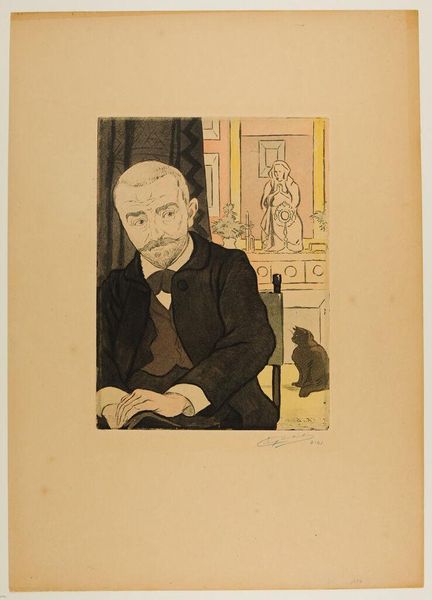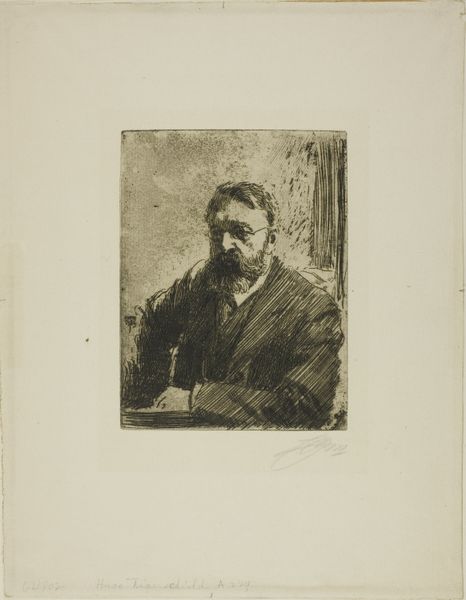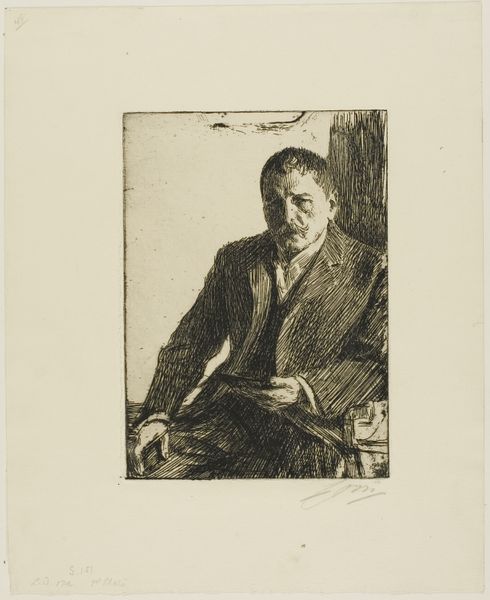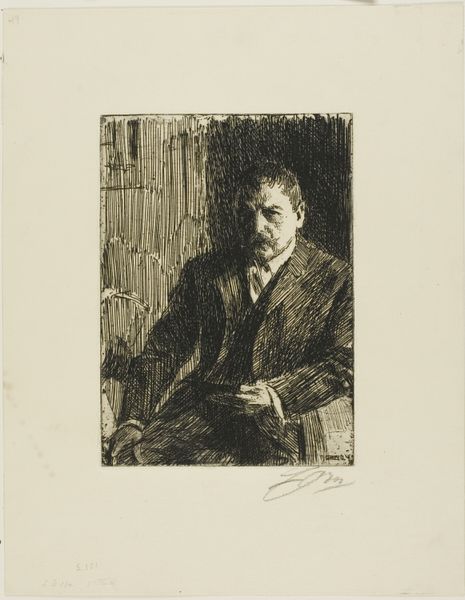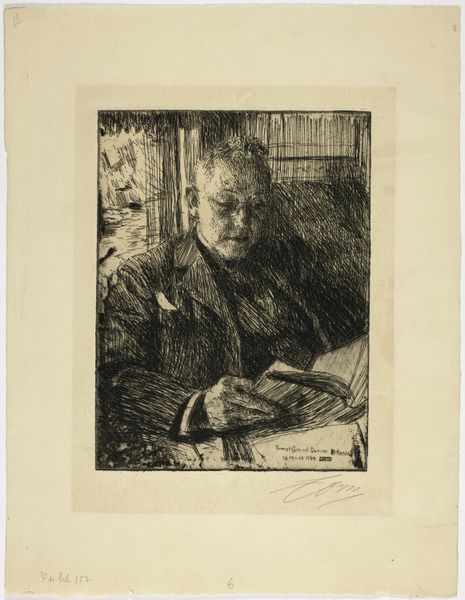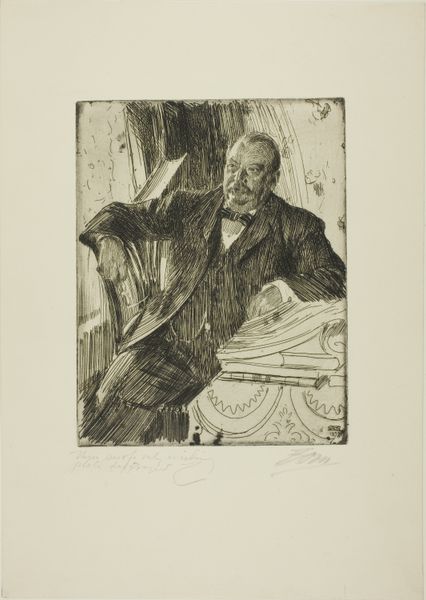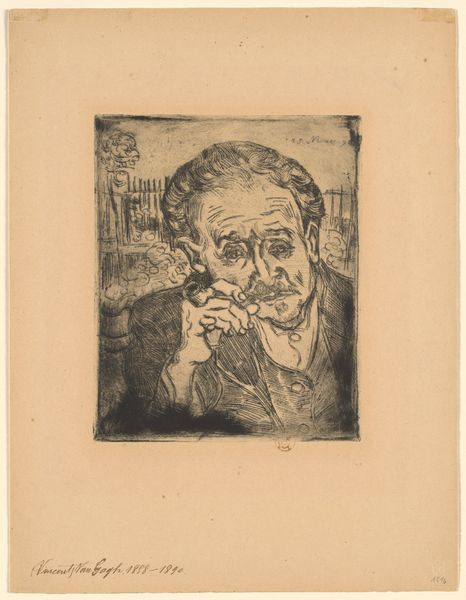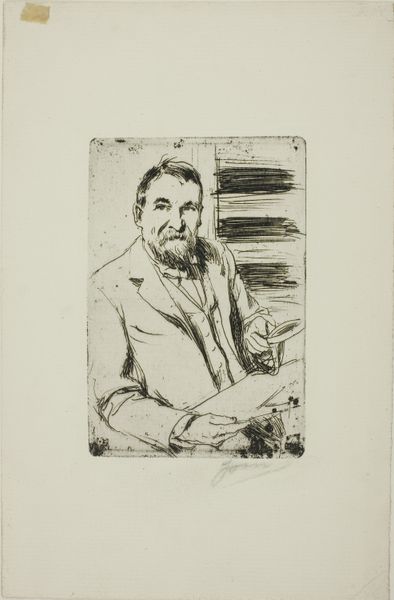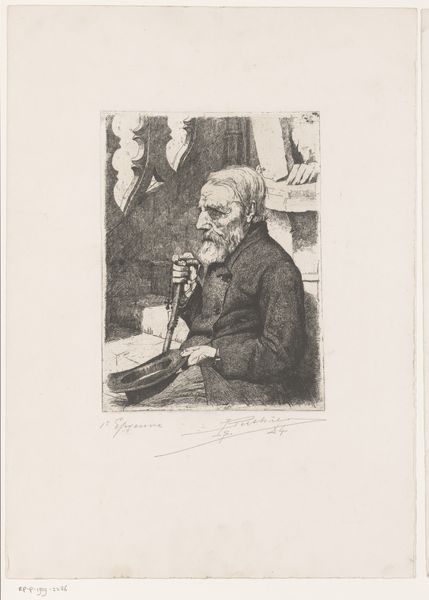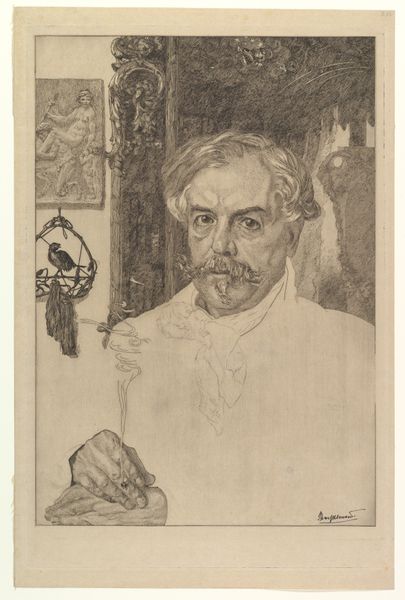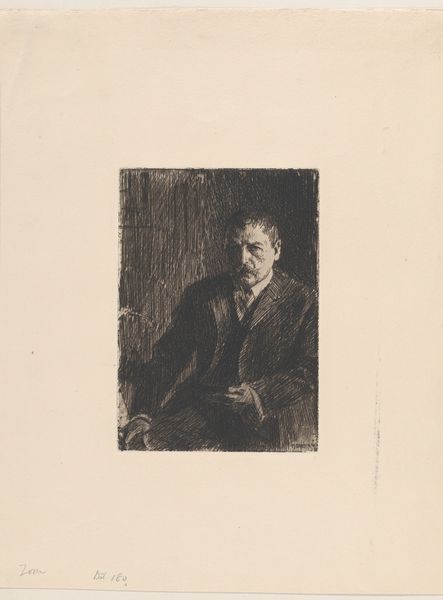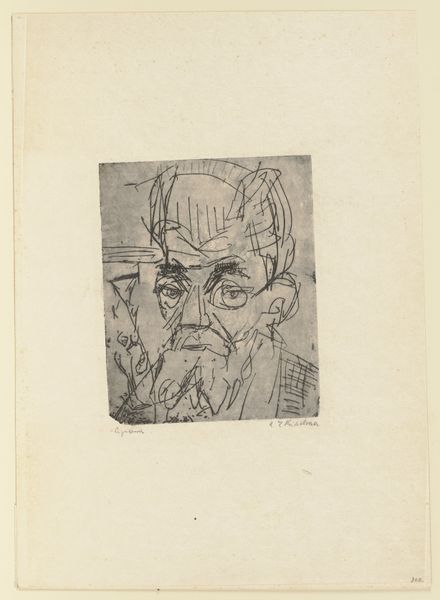
lithograph, print
#
portrait
#
lithograph
# print
#
symbolism
Dimensions: 12 11/16 x 9 1/2 in. (32.23 x 24.13 cm) (plate)22 13/16 x 16 3/16 in. (57.94 x 41.12 cm) (sheet)
Copyright: Public Domain
Eugène Delâtre’s "Portrait of Huysmans" presents us with an image of contemplation, rendered through delicate color lithography. The composition is strikingly divided, with the sitter occupying the left and domestic tableau on the right. This division creates a visual and psychological tension. Delâtre employs a muted palette where browns and greys dominate, punctuated by soft yellows and pinks. The textures of the print suggest a sense of intimacy, inviting us to consider the sitter's inner life. The artist's use of line is equally intriguing. The sinuous contours defining Huysmans’s features and the objects in the background are rendered with a graphic quality characteristic of Symbolist aesthetics. Consider the semiotic interplay between the portrait and the background details; a Madonna figure, plants, a cat. These elements introduce a symbolic layer, reflecting Huysmans's literary interests in spirituality and the occult. The work destabilizes the traditional portrait by embedding the figure within a constructed, symbolic space, challenging fixed notions of identity. This approach shifts from mere representation to an exploration of the subject's intellectual and spiritual inclinations.
Comments
minneapolisinstituteofart almost 2 years ago
⋮
Eugène Delâtre was a French printmaker and watercolorist best known for his color intaglio prints of the late nineteenth and early twentieth centuries. He was first recognized for his artistic prowess during the 1890s, when he contributed plates to such important French publications as "L'Estampe originale" (1893-95) and "L'Estampe moderne" (1897-99). Together with artists such as Theodore Roussel, Mary Cassatt, Manuel Robbe, and Jean Francois Raffaelli, Delâtre helped revitalize color etching in France both as a creative artist and as a specialist printer. This portrait is of the French Decadent poet and novelist Joris-Karl Huysmans (1848–1907) in his writing studio. Huysmans is best known today for his controversial 1884 novel A Rebours (Against Nature), sometimes called the bible of decadence.
Join the conversation
Join millions of artists and users on Artera today and experience the ultimate creative platform.
